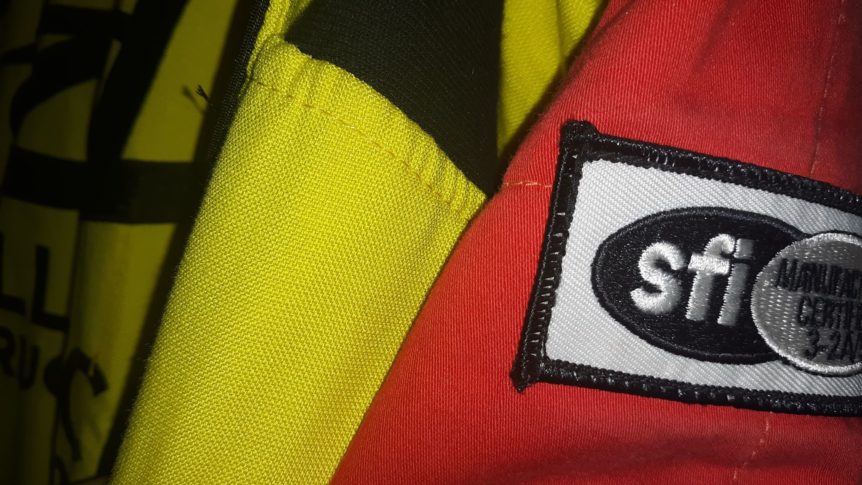
Fire is an inseparable part of racing. It doesn’t have to be your car on fire that risks your life, it could be the car next to you or the one in front of you that just crashed.
The heat from a fire can cause serious burns via heat transfer where the suit remains intact, but heat transfer through the fabric commonly causes serious burns.
Racers have two benchmarks to consider when setting out to purchase a firesuit. One is the rule book of the track or sanctioning body – it sets forth the minimal firesuit safety requirements necessary to compete. And, the SFI and TPP safety ratings reveal the suit’s tested rating.
• The TPP must meet or exceed what is recommended by the sanctioning body. Look for an SFI certification and tags inside the suit.
• Almost all manufacturers sell single layer suits, but a two layer (SFI 3.2A/5) suit is considered minimal protection for a driver.
• Most manufacturers recommend a TPP of 23 and above, even though the track or sanctioning body’s minimum may be 19. The TPP is the layman’s measuring stick.
• Some suits for off road racers have a TPP of 60, and drag racers that have a TPP of 120, but many stock car racers use an SFI 5 two-layer suit that has a TPP racing of 26.
• Fit is important making sure the suit provides maximum protection. A semi-loose fitting suit means a driver can get out of the car quickly because it gives you room to move easily. And air space improves protection.
• Many racers want to be sure Nomex thread is used to hold the suit together. They say it doesn’t make much sense to have a high-quality suit fall apart in an emergency.
• Appropriate, high-quality fire-resistant underwear greatly improves the performance of a quality firesuit.
• Avoid apparel that shouldn’t be worn in a race car. Some items, such as synthetic undergarments and swimsuits should not be worn under a driving suit while in a race car.
The debate between Nomex and cotton treated with Proban goes on. Some manufacturers offer both products. Others say Nomex is the only material that will always stay fire retardant, but Proban can lose fire retardance after multiple washes (25-50) in a home-style unit. Others offering Proban suggest dry cleaning only, but say the cleaner should know not to use petroleum based cleaning solutions. Don’t use bleach or detergents containing bleach. Never throw your suit into a heap. Be sure the suit is completely dry, hang it if you’re at home, before it is stuffed into a bag is important.
You should wash any suit to get rid of body oils, gas, oil, grease and solvents invite problems that prevent a fire suit from doing its job. If you’re a one-man team or work the car yourself, change before you do. An oiled sleeve on a driver suit is unable to do its intended job.

